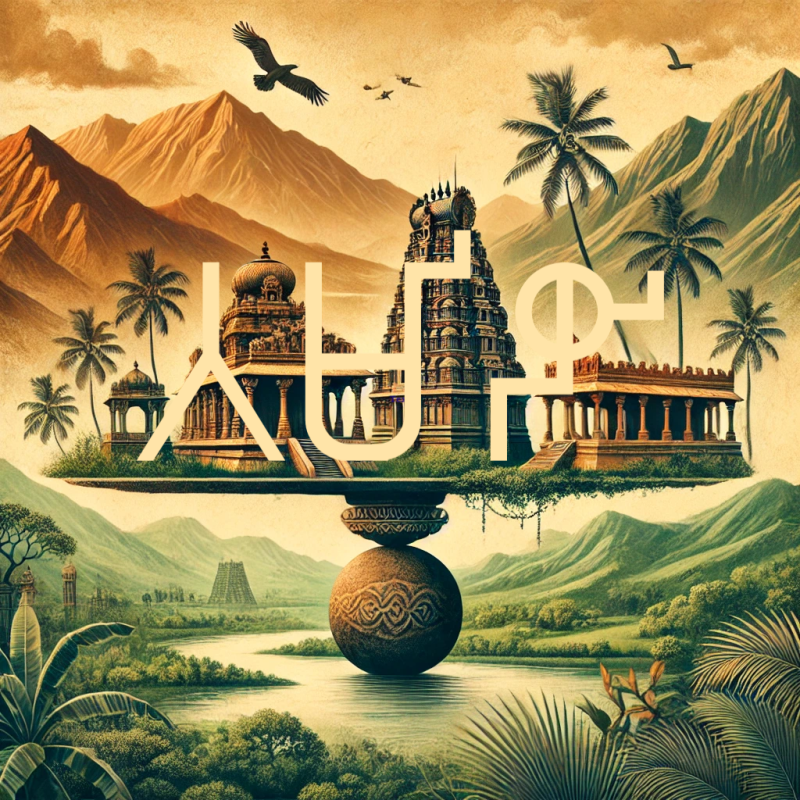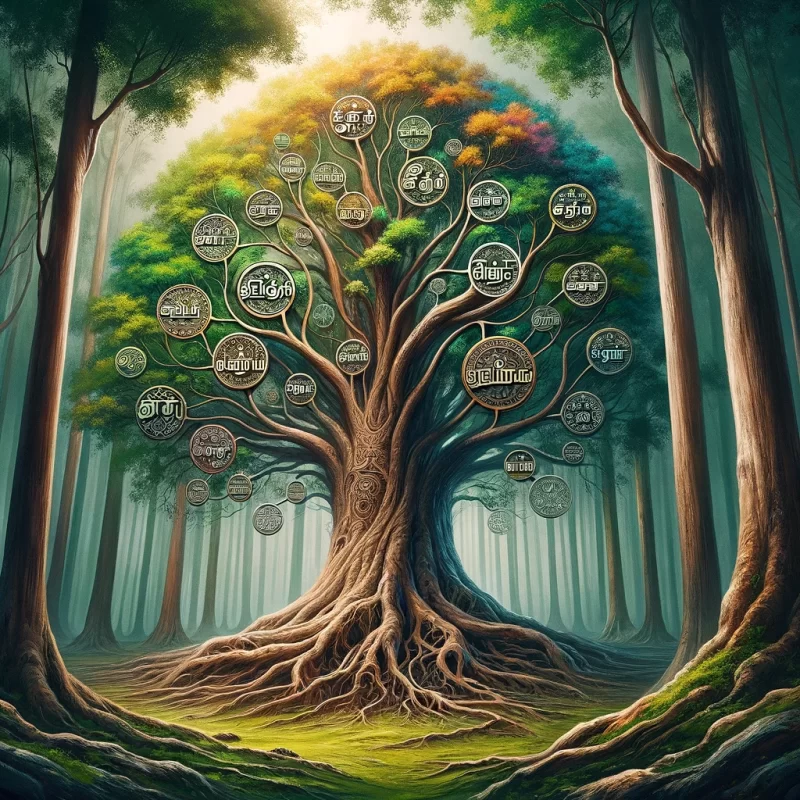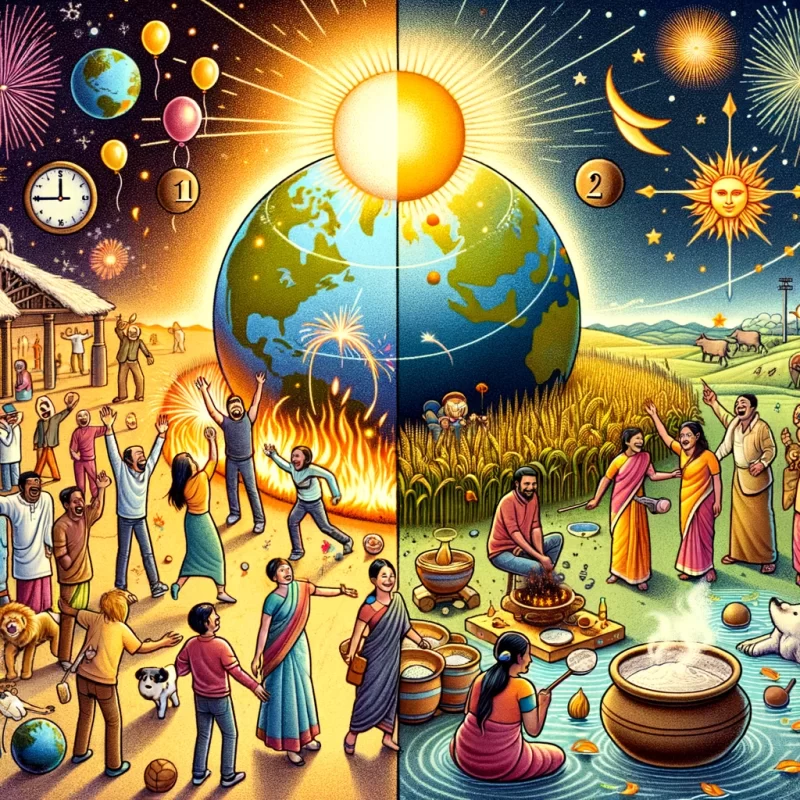Reclaiming Tamil’s Linguistic Legacy
Abstract
This article revisits the script commonly referred to as Tamil-Brahmi, challenging the association with Brahmi as a misnomer. It presents evidence from Tamil’s linguistic and cultural heritage, particularly the insights of Elhuthathikaram (Tholkappiyam), to argue for its rightful identification as the Tamili script (தமிழி எழுத்து). By analyzing archaeological findings, phonological necessities, and historical context, it redefines the script’s identity and highlights its implications for South Asian linguistic historiography.
Introduction
Language and scripts are more than tools of communication; they are embodiments of identity and heritage. The so-called Tamil-Brahmi script, long considered the earliest evidence of Tamil writing, has been framed within narratives that suggest dependency on external influences. This article argues that the script should be recognized as Tamili script (தமிழி எழுத்து), rooted in Tamil’s independent linguistic tradition.
To anchor the discussion, we begin with the discovery of early Tamil inscriptions, such as those found at Keelhadi (dated to approximately the 6th century BCE) and Anuradhapura in Sri Lanka. These findings reveal the geographic breadth and antiquity of Tamil writing, setting the stage for a deeper exploration of its evolution.
Historical Context
Misnomer of Tamil-Brahmi
The term Tamil-Brahmi combines Tamil with Brahmi, suggesting an external origin for Tamil’s writing system. This naming reflects a narrative influenced by northern-centric historiography.
However, the Tamili script (தமிழி எழுத்து) is far more likely to be an independent evolution, as evidenced by the depth of Tamil phonetics and grammar recorded in ancient texts like Tholkappiyam.
Insights from Elhuthathikaram
Tholkappiyam’s Linguistic Framework
Tholkappiyam’s Elhuthathikaram provides a sophisticated analysis of Tamil phonology and orthography through systematic classification and detailed rules. Key examples include:
- Phonological Classification
The text presents a three-tier classification system:
- Primary Sounds (முதல் எழுத்து):
- 12 vowels: அ, ஆ, இ, ஈ, உ, ஊ, எ, ஏ, ஐ, ஒ, ஓ, ஔ
- 18 consonants: க், ங், ச், ஞ், ட், ண், த், ந், ப், ம், ய், ர், ல், வ், ழ், ள், ற், ன்
- Secondary Sounds (சார்பெழுத்து):
- Including ஃ (ஆய்தம்) and combined forms
2. Phonetic Rules (புணரியல்)
Tholkappiyam outlines precise rules for sound combinations:
“மெய்யீ ரொற்றும் உயிர்மெய் யாகும்”
(Two consonants joining with a vowel become a composite letter)
This demonstrates understanding of syllabic structure centuries before modern linguistics.
- Orthographic Principles
The text establishes rules for:
- Letter Formation:
- “எழுத்தென்ப
அகர முதல னகர விறுவாய்
முப்ப ஃதென்ப”
(Letters begin with ‘a’ and end with ‘na’, totaling thirty) - Writing Direction: Left to right organization
- Character Spacing: Guidelines for letter and word separation
4. Sound Properties
Detailed analysis of:
- Duration (மாத்திரை):
- Short vowels: 1 unit
- Long vowels: 2 units
- Consonants: 1/2 unit
- Articulation Points (பிறப்பிடம்):
- Eight positions including throat, palate, tongue tip
“அண்ணம் முதலா முப்பஃ தெழுத்திற்கு
கண்ணிய புள்ளி தந்தன ரியற்றே”
Integration with Script Development
These linguistic insights directly influenced script design:
- Vowel Markers: Systematic placement reflecting phonological rules
- Consonant Clusters: Organized based on articulation points
- Special Characters: Development of unique Tamil characters (ழ, ள, ற) based on precise phonetic needs
Phonological Classification Table
| Category | Sounds |
|---|---|
| Vowels (Kuril) | அ, இ, உ, எ, ஒ |
| Vowels (Nedil) | ஆ, ஈ, ஊ, ஏ, ஓ, ஔ |
| Consonants | க், ங், ச், ஞ், ட், ண், த், ந், ப், ம், ய், ர், ல், வ், ழ், ள், ற், ன் |
Comparative Analysis: Tamili vs. Brahmi Script
A side-by-side comparison illustrating the uniqueness of Tamili script:
| Feature | Tamili Script | Brahmi Script |
|---|---|---|
| Grapheme for “lh” (ழ்) | Unique retroflex design, tailored for Tamil | Absent or approximated |
| Grapheme for “r” (ற்) | Specialized for Tamil phonetics | Simplified or generalized representation |
| Grapheme for “l” (ள்) | Curved and distinctive | Lacks differentiation for retroflex sounds |
| Representation of sounds | Phonologically precise | Generalized phonetics |
This table demonstrates how Tamili script evolved uniquely to represent Tamil phonology, addressing gaps in the Brahmi system.
Comparative Evidence
Examples showing Tholkappiyam’s influence on script development:
- Early inscriptions following phonological rules
- Character modifications reflecting sound classifications
- Systematic adaptation of writing conventions
This sophisticated understanding of Tamil phonology predates many classical grammatical works, demonstrating an established writing tradition that evolved into the Tamili script independently and well before the period of so-called Tamil-Brahmi inscriptions.
Integration vs. Origin
Tamil-Brahmi may represent an adaptation or formalization of an earlier Tamil script during periods of interaction with Brahmi.
The addition of Tamil-specific sounds (ழ, ள, ற) to the script highlights Tamil’s resistance to external linguistic homogenization.
Archaeological Evidence
Tamil’s writing tradition extends back millennia, with key discoveries including:
- Keelhadi Inscriptions: Unearthed in Tamil Nadu, dated to approximately 6th century BCE—3rd century BCE, these findings reveal early Tamil inscriptions on pottery and artifacts.
- Anuradhapura Inscriptions: Found in Sri Lanka, these inscriptions provide evidence of Tamil writing’s spread beyond Tamilakam, underscoring its regional significance.
These inscriptions, written in what is commonly called Tamil-Brahmi, demonstrate a script uniquely adapted to Tamil’s phonetics.
Chronological Framework
The timeline of Tamil writing can be outlined as follows:
| Timeline of Tamili Script Development | Key Features |
|---|---|
| Proto-Tamili Era (Pre-6th Century BCE) | Potential evidence of symbolic or proto-writing systems in Tamilakam. |
| Formalization (6th—3rd Century BCE) | Archaeological findings such as Keelhadi suggest the use of a formalized script. |
| Evolution to Vaṭeṭuttu (Post-3rd Century BCE) | Tamili script evolved into later forms, directly influencing modern Tamil script. |
Scholars like Iravatham Mahadevan have debated the dating and classification of these scripts, with evidence increasingly favoring Tamil’s linguistic independence.
Linguistic Features of the Tamili Script
Phonetic Precision
The script’s ability to represent Tamil’s unique sounds, as detailed in Elhuthathikaram, showcases a linguistic system tailored to Tamil’s phonological structure.
The classification of sounds into vallinam, mellinam, and idaiyinam is unparalleled in other Indian scripts of the time.
Continuity and Evolution
From Tamili script to later forms like Vaṭeṭuttu and modern Tamil script, the continuity of Tamil’s writing tradition highlights its resilience and adaptability.
Tamili script served as the foundation for Tamil’s long literary and epigraphic tradition.
Phonological Necessities
The Tamili script was designed to represent Tamil’s unique sounds, as detailed in Elhuthathikaram (Tholkappiyam). Key features include:
- Vowels (Uyir Elhuthu): A comprehensive system distinguishing short (kuril) and long (nedil) vowels.
- Consonants (Mei Elhuthu): Classified into vallinam (hard), mellinam (soft), and idaiyinam (medium) categories.
- Retroflex Sounds: Letters like lh (ழ்), l (ள்), and r (ற்) are unique to Tamil and necessitated script innovation.
Cultural and Political Influences
Integration vs. Origin
The Tamili script’s adaptation into what is called Tamil-Brahmi was likely influenced by political and cultural exchanges during the later Tamil Kingdoms. However, this should not overshadow the script’s indigenous origins.
Reclaiming the Narrative
The naming of Tamil-Brahmi reflects a broader historiographical trend to subordinate Tamil’s linguistic identity. Recognizing it as Tamili script restores Tamil’s cultural and historical autonomy.
A Vision for Reclaiming Identity
Why Tamili Script Matters
Renaming the script as Tamili is an act of reclaiming Tamil’s linguistic pride. It highlights:
- Tamil’s contribution to world linguistics.
- The autonomy and sophistication of Tamil’s writing tradition.
Implications for Tamil Heritage
This redefinition strengthens efforts to preserve Tamil culture, emphasizing its role as one of the oldest and most advanced linguistic traditions.
Future Research Directions
- Archaeological Exploration: Further excavations in Tamil Nadu and Sri Lanka to uncover more inscriptions.
- Deciphering Proto-Tamili: A deeper study into potential pre-Tamili writing systems.
- Cross-Script Comparison: Comparative studies with other ancient scripts to highlight Tamili’s uniqueness.
Conclusion
The so-called Tamil-Brahmi script is more accurately described as the Tamili script (தமிழி எழுத்து), a testament to Tamil’s linguistic and cultural resilience. By reclaiming its true identity, we honor the depth and independence of Tamil heritage and affirm its rightful place in the history of human civilization.
References
- Tholkappiyam (Elhuthathikaram): Insights on Tamil phonetics and script.
- Keelhadi Excavation Reports: Evidence of early Tamil inscriptions.
- Comparative Linguistic Studies: Analysis of Tamil and Brahmi scripts.
- Contributions from contemporary Tamil scholars and epigraphists.
- Studies on linguistic independence and historical script evolution.
Muhelen Murugan. December 1, 2024





